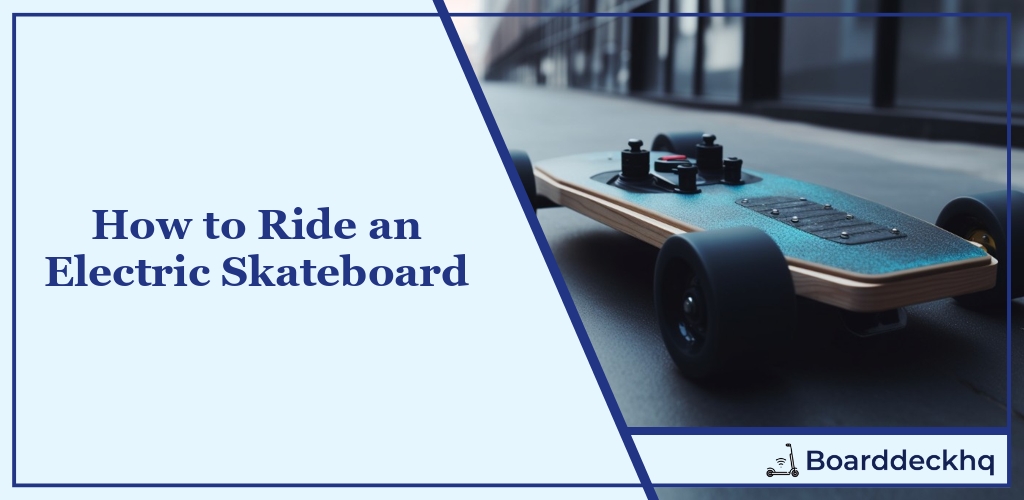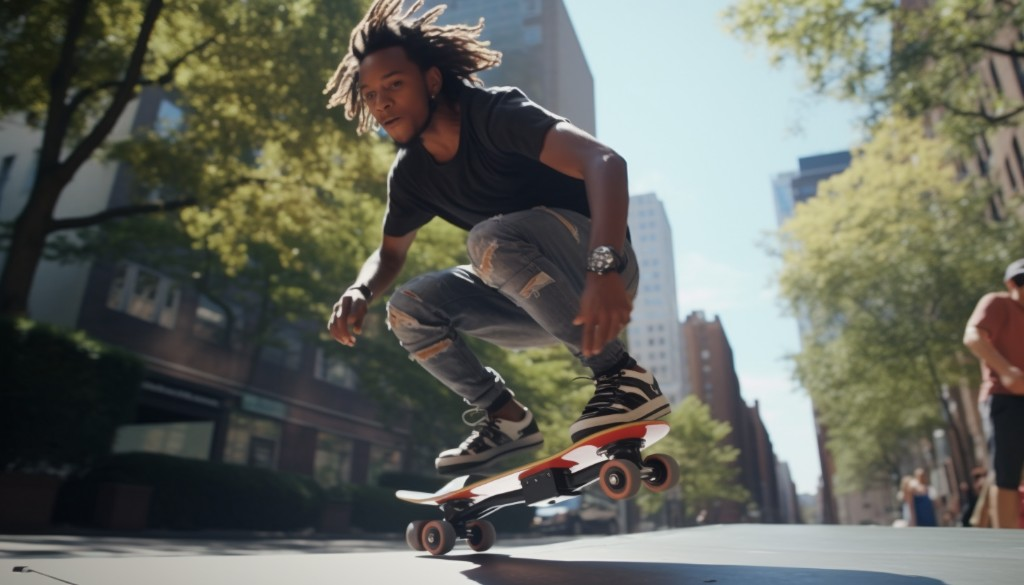Imagine you, on a sunny afternoon, cruising down the lane on a sleek, whisper-quiet electric skateboard. Now, that’s not just a cool dream but a reality you can master. This comprehensive guide will equip you with everything you need to know to ride an electric skateboard with style and safety.
What we’ll cover
-
- Essential Gear
- Selecting Your E-Skateboard
- Electric Skateboard Basics
- Correct Stance
- First Ride
- Advanced Techniques
- Safe Falling Methods
- Importance of Practics
- Legalities and Safety
- Customizing Your E-Skateboard
- Tips for Varied Riders
So, strap on your helmet and let’s dive into the electrifying world of electric skateboarding!
Essential Safety Equipment
Every time I ride an electric skateboard, I make sure to gear up with essential safety equipment. Skateboarding is exhilarating, but it also comes with its fair share of risks. Trust me, the safety gear is not just for show, it’s a vital aspect of the sport. It’s about protecting yourself from potential harm and ensuring you can continue to enjoy the thrill of electric skateboarding without fear.
When I talk about safety gear, I’m referring to helmets, knee and elbow pads, wrist guards, and the right shoes. You might think it’s a lot to put on, but believe me, it’s worth it.
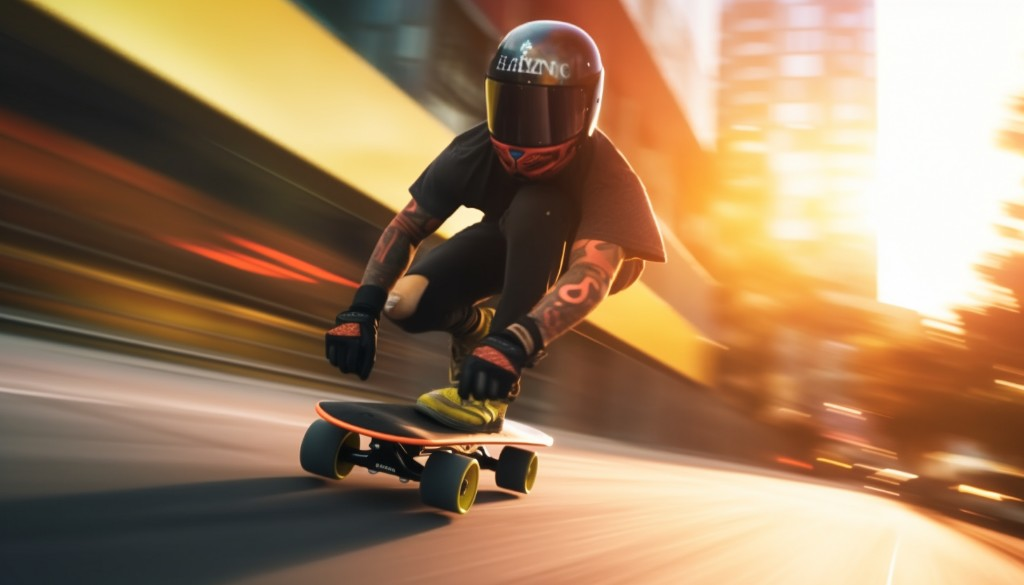
Importance of Wearing a Helmet
Just think about it. Your head is the command center of your body. It houses your brain, which controls everything you do. A simple fall could lead to head injuries that could change your life forever. The risk is real, and wearing a helmet significantly reduces it.
There was this one time I lost control while cruising downhill on my electric skateboard. I fell hard, but my helmet took the brunt of the impact, saving me from what could have been a severe head injury. From that day forward, I never ride without my helmet on.
Choosing the Right Shoes
Now let’s talk about footwear. The right shoes can make a world of difference when you’re riding an electric skateboard. It’s not just about looking cool, it’s about grip and control. Your feet are your primary connection to the board, and the shoes you wear can either enhance or impair your control over the board.
I’ve found that shoes with flat soles and good grip work best for me. They help me maintain contact with the board, providing the control I need to navigate turns and adjust my speed. I can’t emphasize enough how crucial it is to wear appropriate shoes when you’re out there on your e-skateboard.
Importance of Knee and Elbow Pads
Last but certainly not least, let’s talk about knee pads and elbow pads. Picture this: you’re cruising along on your board when suddenly you hit a rough patch and lose balance. Your natural instinct will be to protect yourself by extending your arms or bending your knees. But if you hit the ground hard, you could end up with serious knee or elbow injuries.
This is where knee pads and elbow pads come in. They act as shock absorbers, cushioning the impact and protecting your joints from injury. I’ve had my share of falls, and I can tell you, knee pads and elbow pads have saved me from many painful scrapes and bruises.
So remember, the key to enjoying a safe ride on your electric skateboard is to always wear your safety gear. It might seem like a hassle at first, but once you get used to it, you’ll realize it’s a small price to pay for the peace of mind it provides. Plus, there’s something about gearing up that makes you feel invincible, ready to take on any challenge the road throws at you.
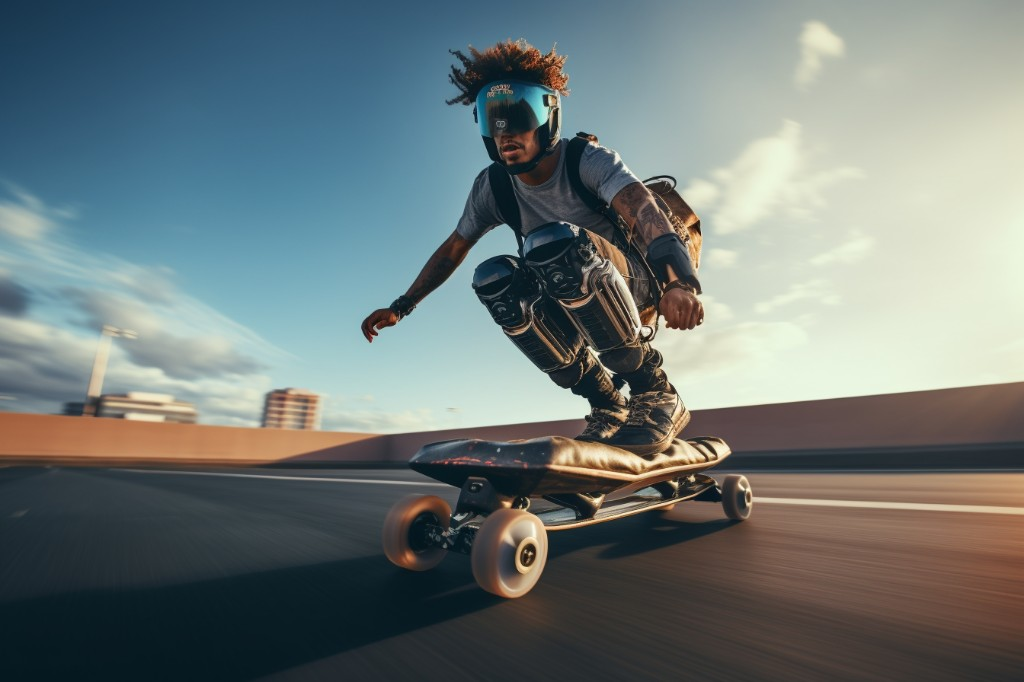
Choosing the Right Electric Skateboard
As I wandered into a skateboard shop in Los Angeles, an array of electric skateboards caught my eye. Each skateboard, with its unique features and design, seemed to call out to me. However, I knew that selecting the right one for myself would require more than just an affinity for its aesthetics.
From my experience, choosing an electric skateboard is all about understanding your skill level and riding purpose. If you’re a beginner, you might want to start with a regular skateboard before transitioning to an electric one. The mechanics are similar but the speed and power of an electric skateboard can be overwhelming at first.
On the other hand, if you’ve been skateboarding for a while and are looking to add some speed and distance to your rides, an electric skateboard could be your best bet. Its larger size and motorized mechanism allow for smoother, faster rides, making it perfect for commuting or long-distance cruising.
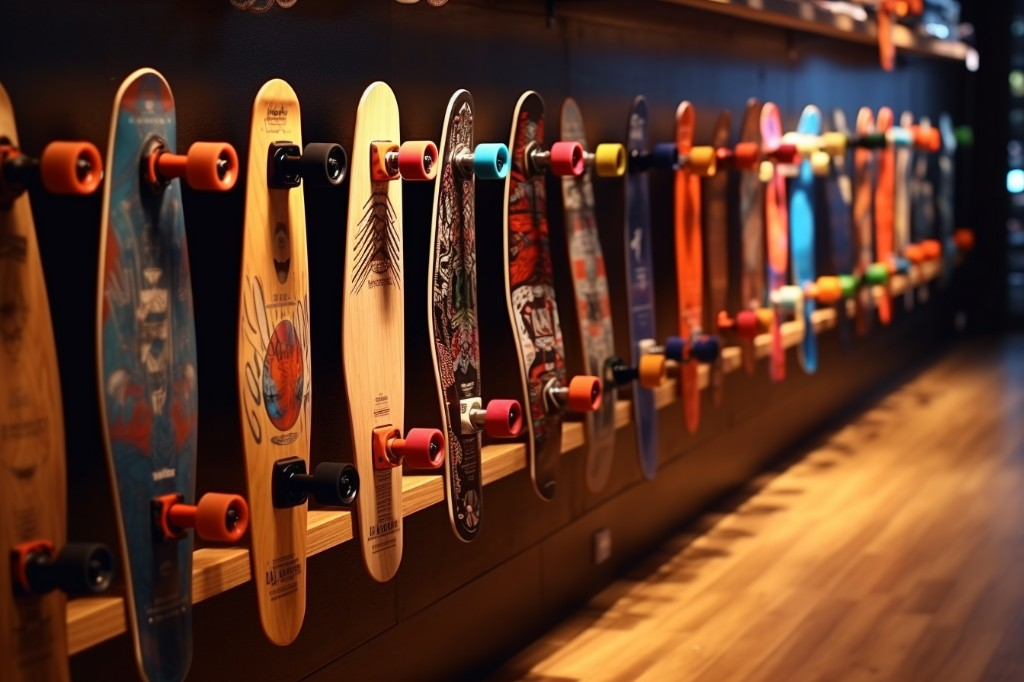
Pre-Ride Check
Before embarking on your electric skateboarding journey, it’s essential to carry out some basic checks to ensure your board is ready to ride.
Checking the Battery Level
Before you ride an electric skateboard, it’s crucial to check the battery level. I learned this the hard way when my board ran out of juice halfway through my ride, leaving me stranded miles from home.
Just like you wouldn’t embark on a long road trip without checking your car’s gas tank, you should never start a ride without ensuring your e-skateboard has enough battery life. Most electric skateboards have an indicator light or a digital display showing the battery level. Make it a habit to check this before every ride to avoid any unpleasant surprises.
Inspecting the Electric Skateboard
After checking the battery level, the next step is to inspect the board for any faults or damages. Just like you would inspect a bicycle or a car before a ride, an electric skateboard deserves the same level of scrutiny.
Start by examining the deck for any cracks or splits. These could indicate that the board is structurally weak and may break during your ride. Then, check the wheels and bearings for any signs of wear and tear.
Next, inspect the trucks, the metal parts that connect the wheels to the deck. Ensure they are tight and secure. Loose trucks can make the skateboard unstable and hard to control.
Finally, don’t forget to check the motor and the battery compartment. Look for any loose wires or components that could interfere with the board’s performance.
In my experience, taking a few minutes to inspect your electric skateboard before each ride save you from potential accidents and costly repairs down the line. It’s an essential step that should not be overlooked, regardless of how eager you are to hit the road.
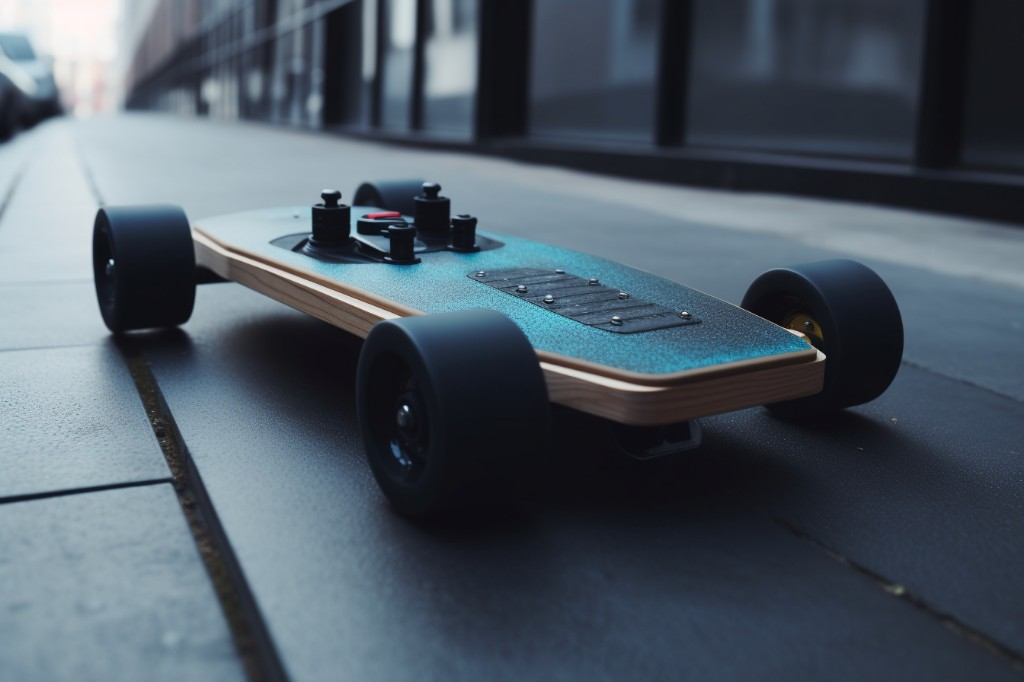
By now, you’ve got your safety gear on and have conducted a thorough inspection of your e-skateboard. You’re almost ready to ride. But before you do, it’s important to understand your electric skateboard and how it works. This knowledge will not only enhance your riding experience but also ensure your safety on the board.
Understanding the Electric Skateboard
Getting to know your electric skateboard is like learning a new language. You’ll need to understand the various parts, their functions, and how they interact with one another to ensure a smooth and safe ride. As you familiarize yourself with your e-skateboard and its components, you’ll gain the confidence and skill needed to ride an electric skateboard efficiently and safely.
Familiarizing with the Remote Control
The remote control is your primary interface with the electric skateboard. Think of it as your magic wand, giving you the power to command the board’s speed and direction. The first step in using the remote control is to understand its layout.
Most remotes will have a joystick or slider for controlling speed and braking. Pushing the joystick forward or sliding it up will increase your speed, while pulling it back or sliding it down will slow you down or bring you to a stop. Make sure to practice these movements while stationary before attempting them while moving.
The remote control will also have a power button, which turns both the remote and the board on or off. Some models might also feature a switch for changing between different riding modes. This allows you to adjust the electric skateboard’s performance characteristics to match your skill level or riding conditions.
Identifying the Direction of Movement
Identifying the direction of movement on an e-skateboard can be trickier than it seems, especially for beginners. Unlike traditional skateboards, electric ones can go in either direction. However, just because you can go backward doesn’t mean you should.
The board’s design will usually indicate its intended direction of travel. The wider end is typically the front, while the narrower end is the back. In some cases, an arrow or logo will point to the front. When riding an electric skateboard, always make sure you’re facing the right way. This will help you maintain balance and control, especially at higher speeds.
Understanding the Settings
Just like a car, an electric skateboard has various settings that can be adjusted for a more comfortable and safe ride. These adjustments can be made both on the board itself and through the remote control.
Hardware Settings
One of the first things you should adjust before setting off is the riding mode. This setting determines the E-Skateboard’s top speed and acceleration curve. Beginners should start in a lower riding mode until they get used to the board’s responsiveness. As your confidence grows, you can gradually switch to higher modes for more speed and thrill.
Another important setting to consider is the truck tightness. The trucks are the metal pieces that attach the wheels to the board. Tightening or loosening them affects how easily the board turns. A tighter truck makes for a more stable ride but less maneuverability, while a looser one allows for sharper turns but can feel unstable at high speeds.
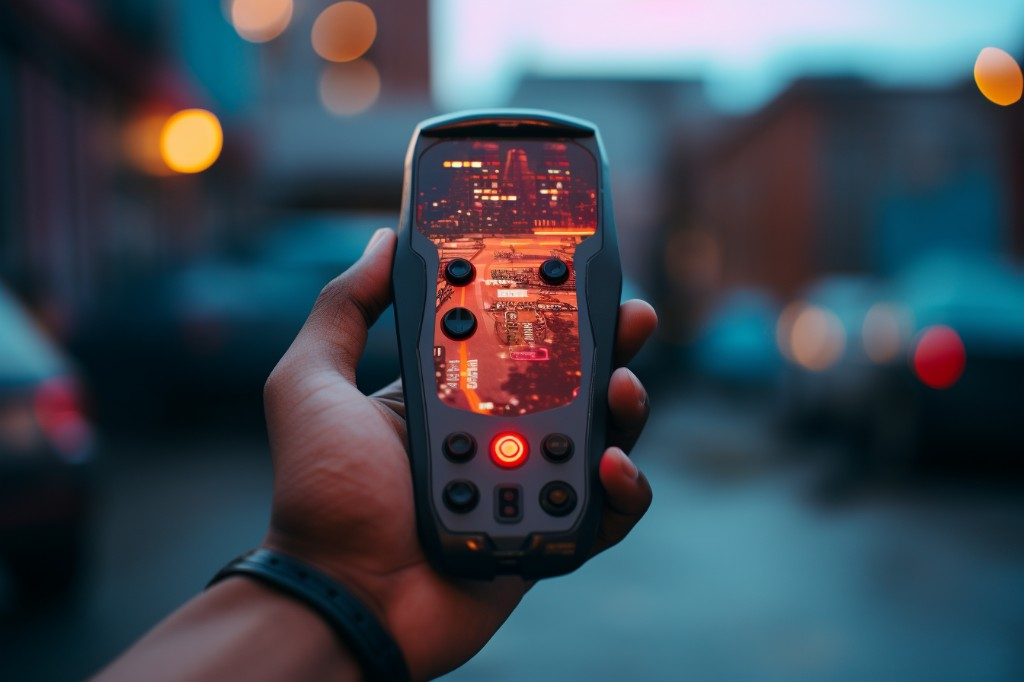
Remote Control Settings
The remote control settings are crucial for ensuring a safe and enjoyable ride. You can adjust these settings to change how the electric skateboard responds to your commands.
Firstly, check if your remote has different riding modes like the board does. If so, make sure the mode on your remote matches the one on your board. This synchronicity ensures that your inputs from the remote will translate correctly to the board’s movements.
Another important setting is the brake sensitivity. This determines how quickly the electric skateboard slows down or stops when you pull back on the joystick or slider. Beginners might want a more sensitive brake for safety, while experienced riders may prefer a less sensitive one for smoother deceleration.
Remember, understanding your electric skateboard and how it operates is crucial to ensure a safe and enjoyable ride. So take your time, learn about its various components and settings, and you’ll soon be cruising around like a pro.
Correct Skateboard Stance
The wind in your hair, the sensation of freedom, and the thrill of speed – these are just some of the feelings I’ve experienced while riding an electric skateboard. But before you get carried away with the excitement, it’s crucial to understand the correct skateboard stance for balance and control. It’s a bit like learning to walk before you can run. You wouldn’t try to sprint without first knowing how to place one foot in front of the other, right? The same principle applies here.
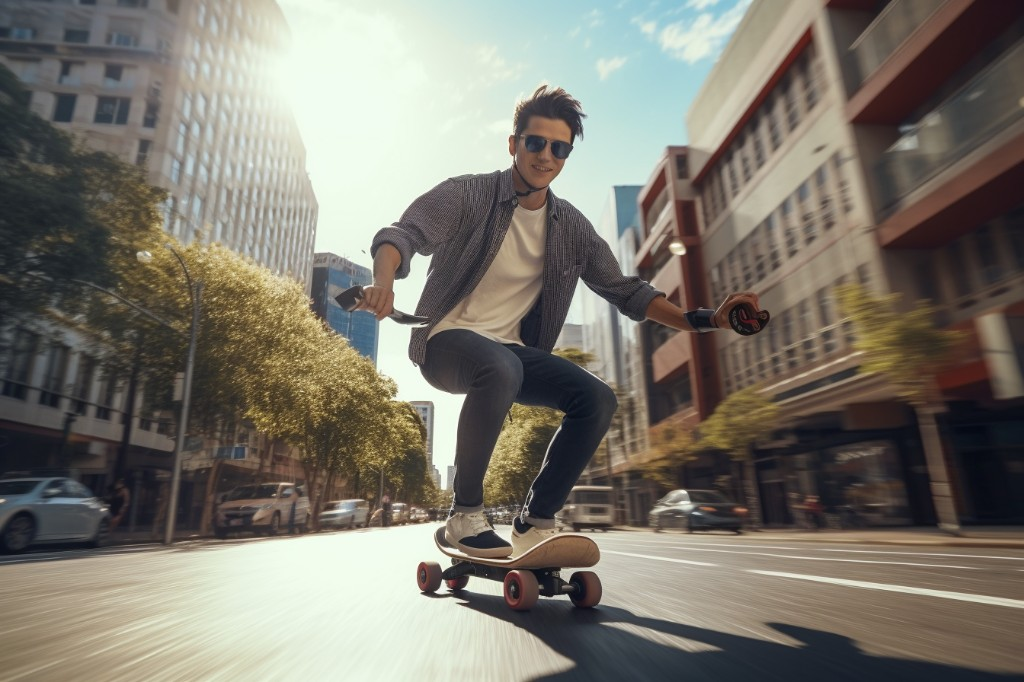
Regular Stance
When you think about your skateboard stance, it’s akin to a surfer riding a wave or a snowboarder sliding down a snowy slope. The regular stance, with your left foot forward, is one of the most common stances for electric skateboard riders. This position is ideal if you’re naturally left-handed or feel more comfortable leading with your left foot. It’s quite simple really – just position your left foot towards the front of the board and your right foot towards the back. It might feel a bit awkward at first, but with practice, it’ll soon feel like second nature.
Goofy Stance
On the flip side, there’s the goofy stance. No, it’s not silly or ridiculous as the name might suggest. It’s merely a term for those who feel more comfortable leading with their right foot forward. It’s just like being right-handed or left-handed – there’s no right or wrong; it’s all about what feels natural to you. So, if you find yourself naturally placing your right foot at the front of the board, you’re likely a ‘goofy’ rider.
Proper Foot Placement
The art of maintaining balance on an electric skateboard lies in proper foot placement. Picture your skateboard as a clock face. Position your front foot (whether it’s your left foot or right foot, depending on your stance) at a slight angle across the board, somewhere between the 10 and 11 o’clock positions. This foot acts as your steering wheel, guiding your direction and helping you balance.
Your back foot should be perpendicular to the board’s length, positioned across the board at the 3 o’clock position. This back foot plays a crucial role in maintaining stability and controlling speed. It’s like the brake pedal in your car, ready to help you slow down when needed.

Remember, the most important thing is comfort. If you feel more comfortable with a slightly different foot placement, that’s okay. These are guidelines, not hard and fast rules. As long as you have control over the skateboard and can balance comfortably, you’re on the right track.
With these stances and foot placements in mind, you’re now ready to step onto the board and start experiencing the exhilaration of electric skateboarding. Trust me; it’s an experience unlike any other!
Initial Riding Experience
Gearing up for your first ride on an electric skateboard can be both thrilling and nerve-wracking. The excitement of feeling the breeze as you glide down the street combined with the apprehension of potentially losing control is a cocktail of emotions I know all too well. But, don’t fret! With a few pointers, you’ll be ready to start riding in no time.
Remember the first time you learned to ride a bicycle? You probably had training wheels or a trusted adult holding you steady. Similarly, when learning to ride an electric skateboard, you might want to have a friend nearby or practice in an open, traffic-free space.
Before you hop on, take a moment to familiarize yourself with the board’s controls. Typically, e-skateboards are controlled by a handheld remote that allows you to accelerate, brake, and sometimes even reverse.

First Ride Guidelines
Safety should always be your priority when you ride an electric skateboard. Equip yourself with protective gear like a helmet, knee pads, and elbow pads. Trust me, it’s better to be safe than sorry.
Start by stepping onto the board with your dominant foot first, placing it over the front trucks (the metal part where the wheels are attached). Then place your other foot at the back end of the board. Remember to keep your feet shoulder-width apart for better balance.
Learning to Accelerate
Once you’re comfortable standing on the electric skateboard, it’s time to put the pedal to the metal — or in this case, your thumb to the remote. To accelerate, gently slide the control wheel on your remote forward. It’s similar to stepping on a gas pedal in a car; the more you push, the faster you go.
Remember to lean forward slightly as you accelerate. It’s just like when you’re in a car and you lean back into your seat as it speeds up. This small shift in body weight will help you maintain balance and control as your electric skateboard picks up speed.
Learning to Brake
Braking on an electric skateboard isn’t as straightforward as it sounds. It’s not just about pulling back on the control wheel. The key is to lean back as you brake. This counteracts the forward momentum and helps you maintain balance.
Just remember, the harder you pull back on the remote, the more abruptly you’ll stop. So, always start with a gentle pull to decelerate smoothly. As you gain more experience, you’ll learn how much pressure to apply for different speeds and situations.
Learning to Turn
Turning is another essential skill to master when learning to ride an electric skateboard. Start by practicing simple turns in a safe, open area. To turn, you’ll need to lean into the direction you want to go. For example, if you want to turn right, lean your body weight to the right.
It might feel a little strange at first, kind of like trying to do the limbo while standing on a moving platform. But with a bit of practice, you’ll soon be carving up the streets like a pro.
Remember that practice makes perfect. Start slow, stay safe, and soon enough, you’ll be an expert rider navigating your way through city streets and parks with ease!

Closing Thoughts
Mastering the art of riding an electric skateboard entails several crucial steps. It begins with equipping yourself with essential safety gear, which not only ensures your protection but also enhances your confidence on the skateboard. The next step involves choosing the right E-Skateboard that aligns with your skill level and riding objectives.
Understanding the functionality and mechanisms of the electric skateboard is another vital aspect, as it lays the foundation for a seamless riding experience. Once these factors are addressed, one must adopt the correct skateboard stance, which aids in maintaining balance and control while riding.
Lastly, the initial riding experience should be approached with patience and perseverance. Through gradual practice and exposure, you can even delve into advanced riding techniques, thereby enriching your electric skateboarding journey.
Frequently Asked Questions
What safety equipment is essential for riding an electric skateboard?
Helmet, knee pads, elbow pads, and wrist guards are considered essential safety equipment for riding an electric skateboard.
How do I choose the right electric skateboard?
Choosing the right electric skateboard depends on your skill level, intended use (like commuting or off-road), and budget. You should also consider factors like battery life, speed, and board weight.
What is the correct stance for riding an electric skateboard?
The correct stance involves standing with your feet shoulder-width apart on the board, one foot near the front and the other near the back. Your toes should point towards the sides of the board.
What are some tips for a beginner’s first ride on an electric skateboard?
Beginners should start with a slow speed, practice in a safe and open space, and ensure they are comfortable with the board’s controls before venturing onto busier paths or roads.
What are some advanced riding techniques for electric skateboards?
Advanced riding techniques include carving (shifting weight to turn), downhill riding, sliding (drifting), and learning to ride switch (leading with your non-dominant foot).
